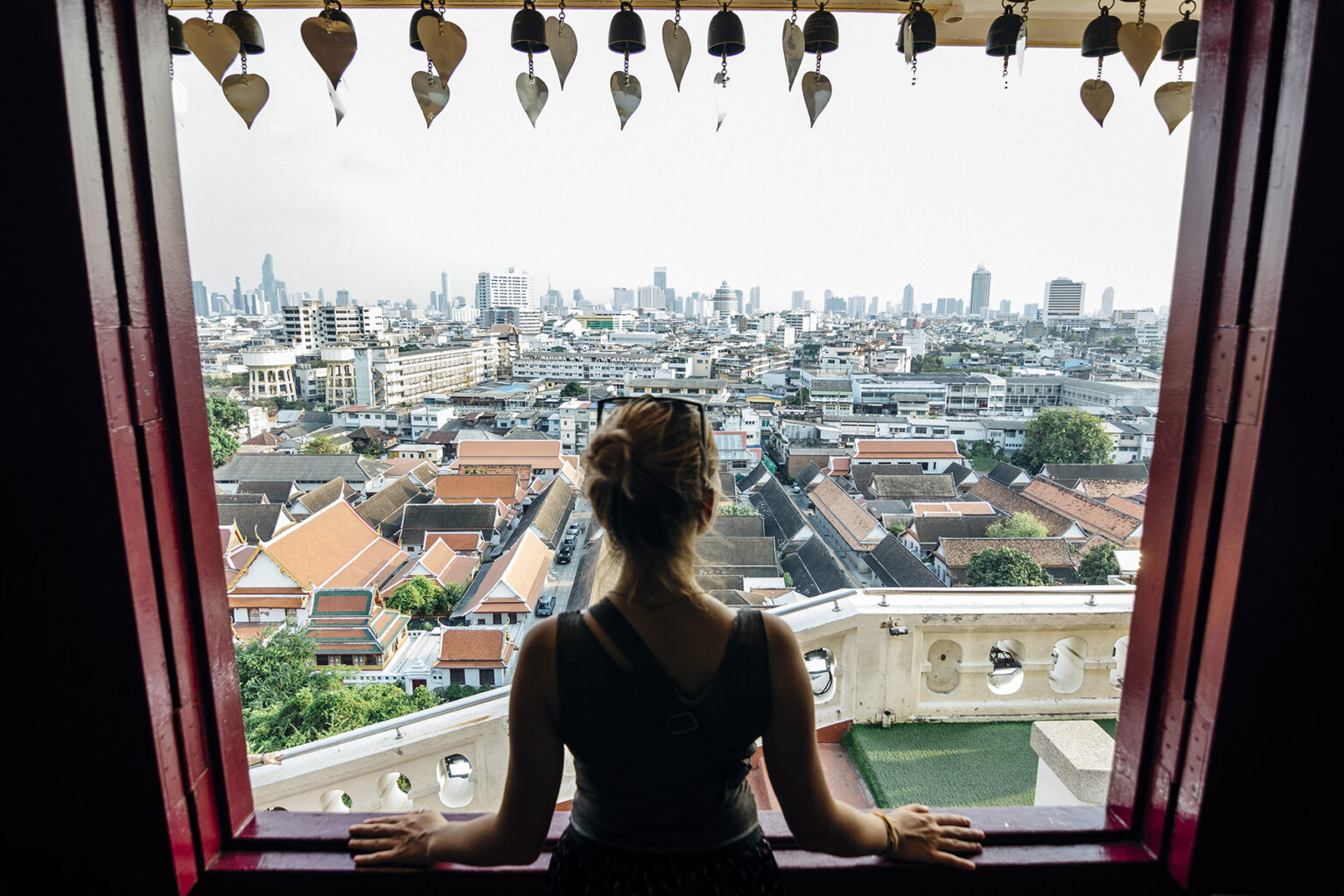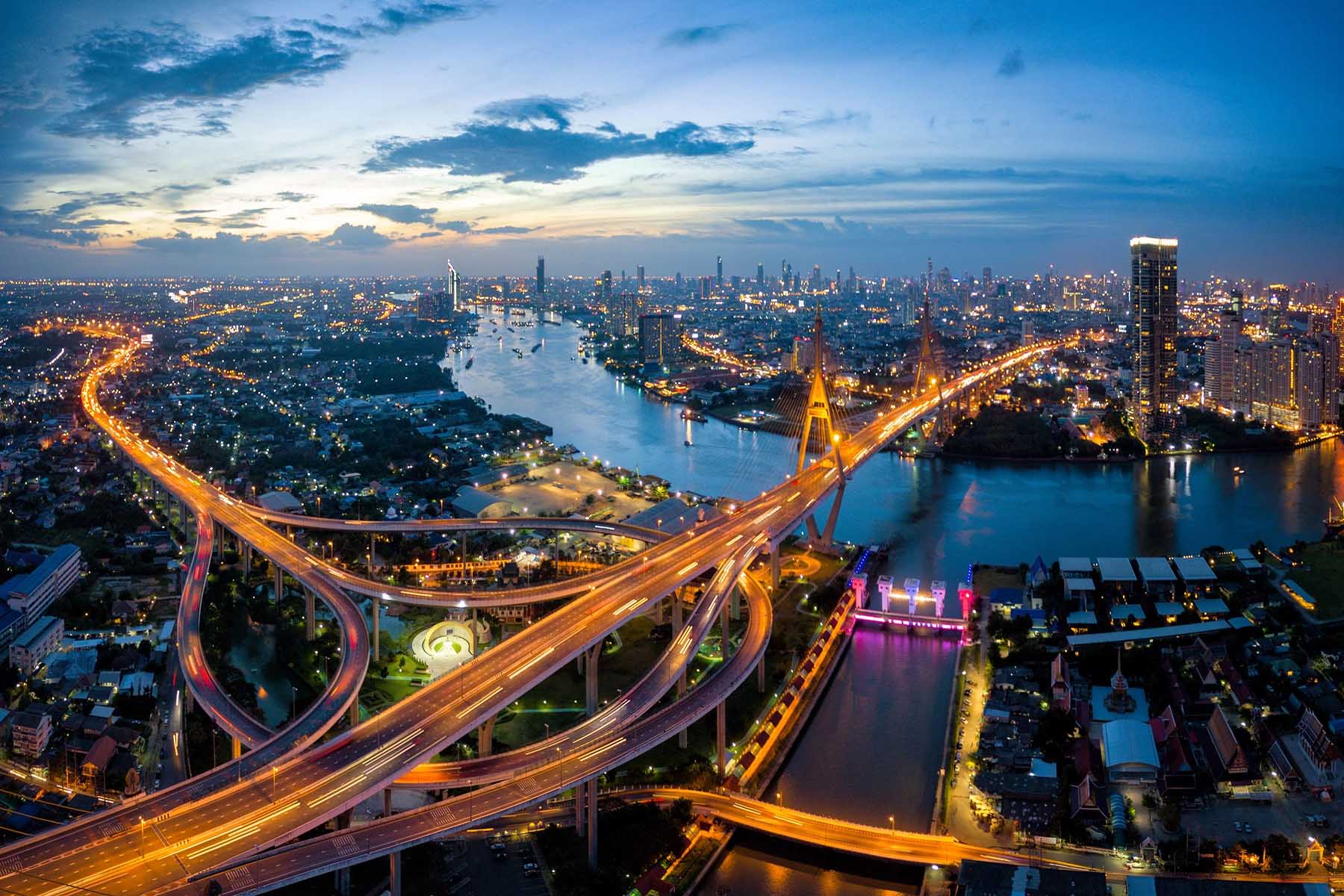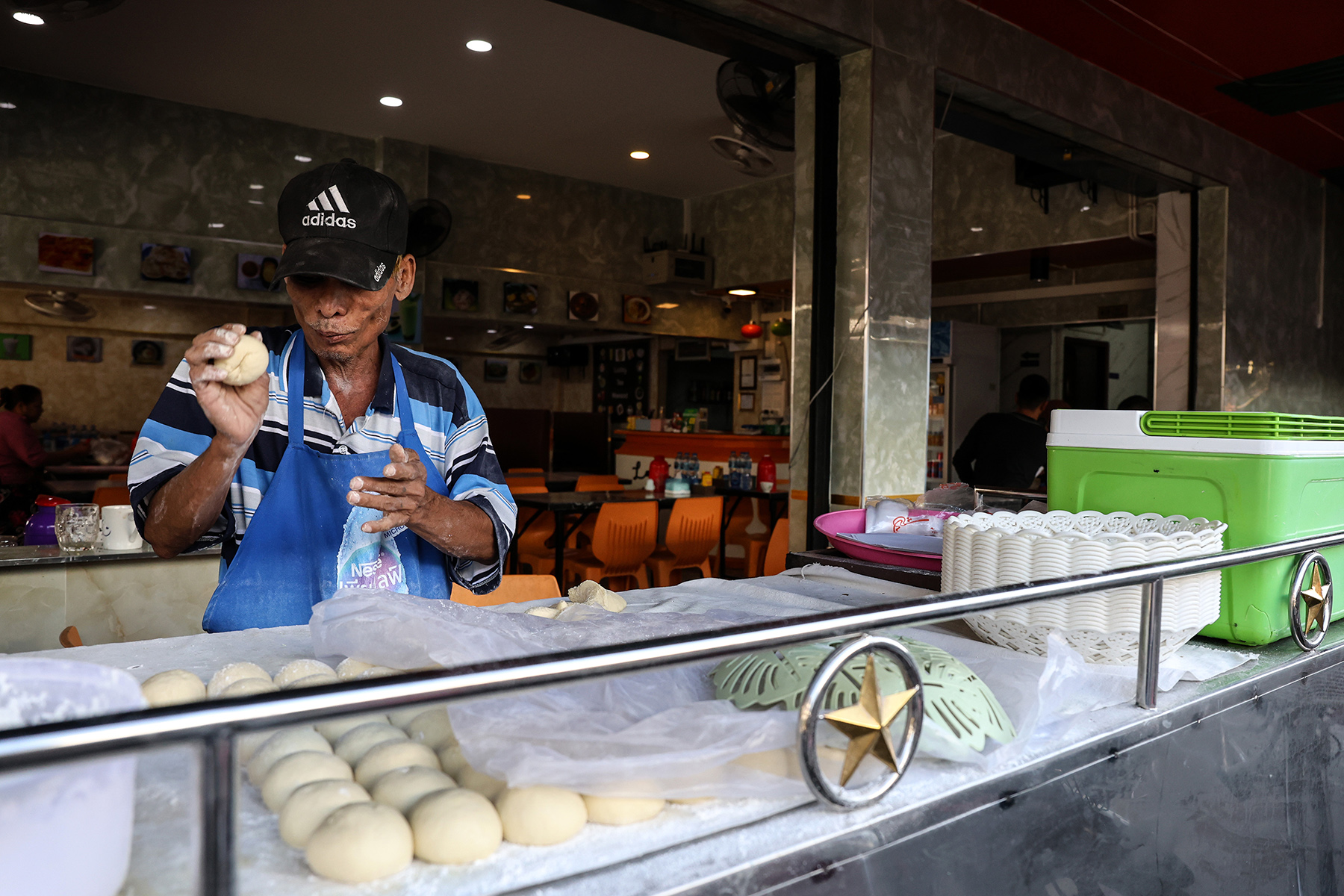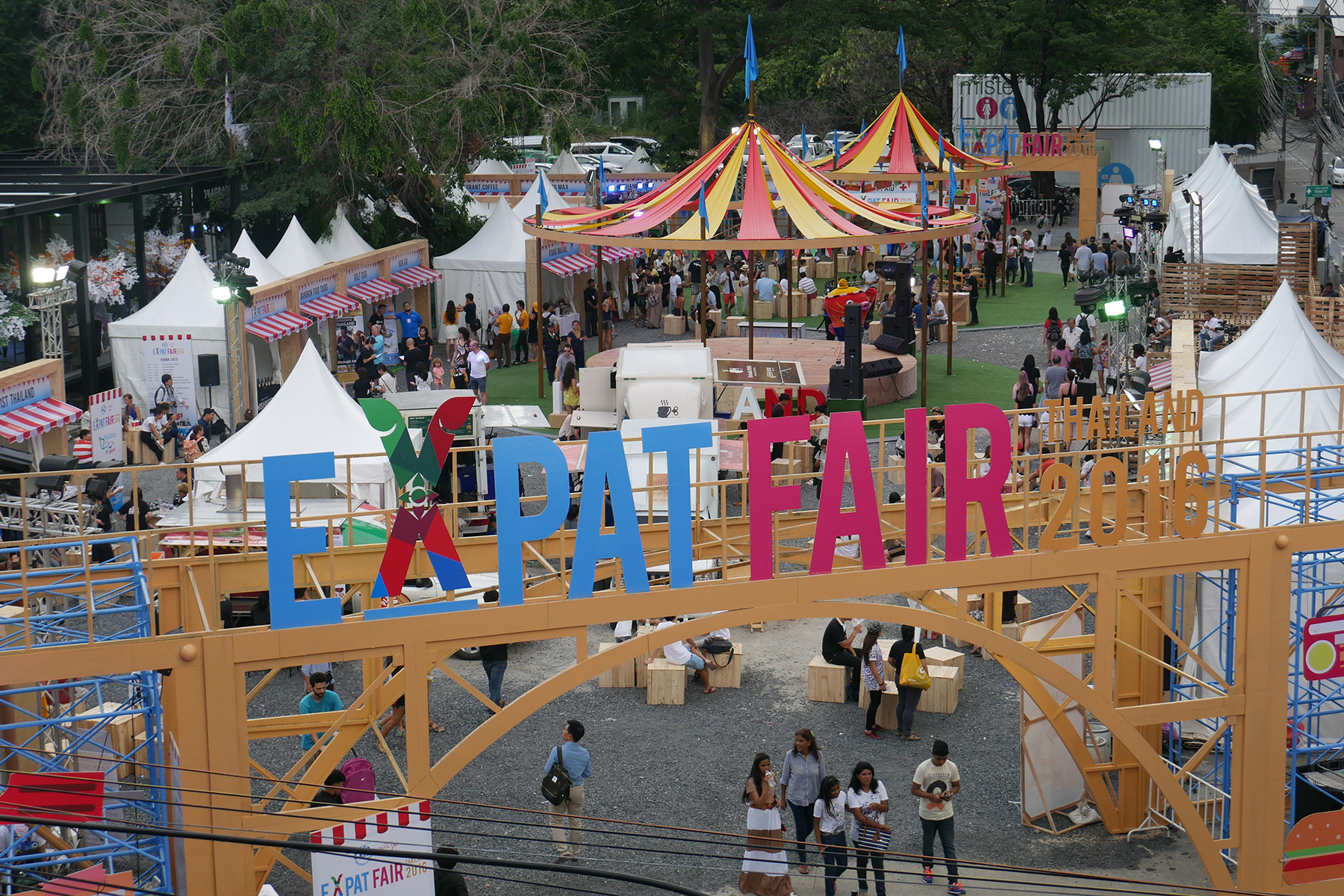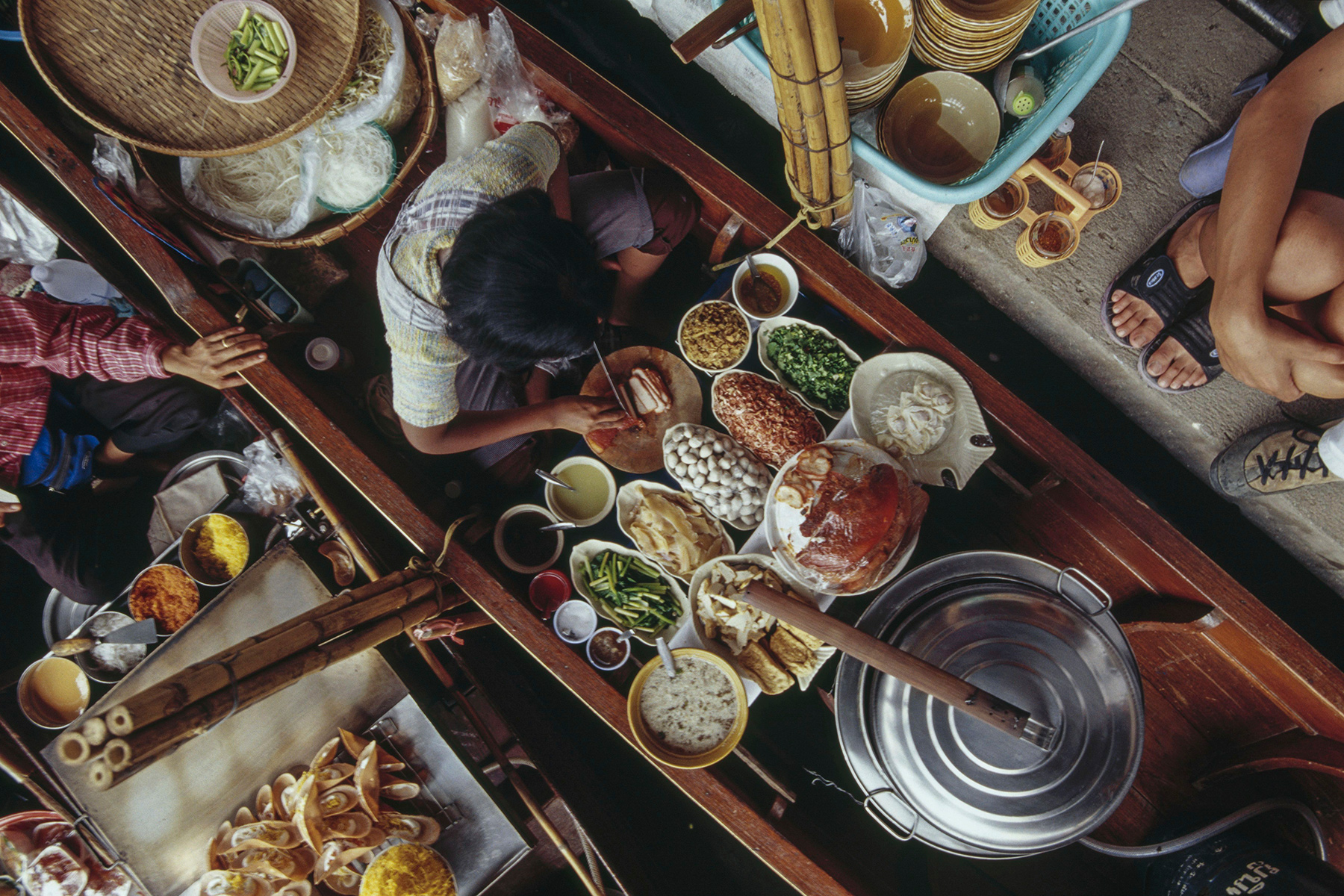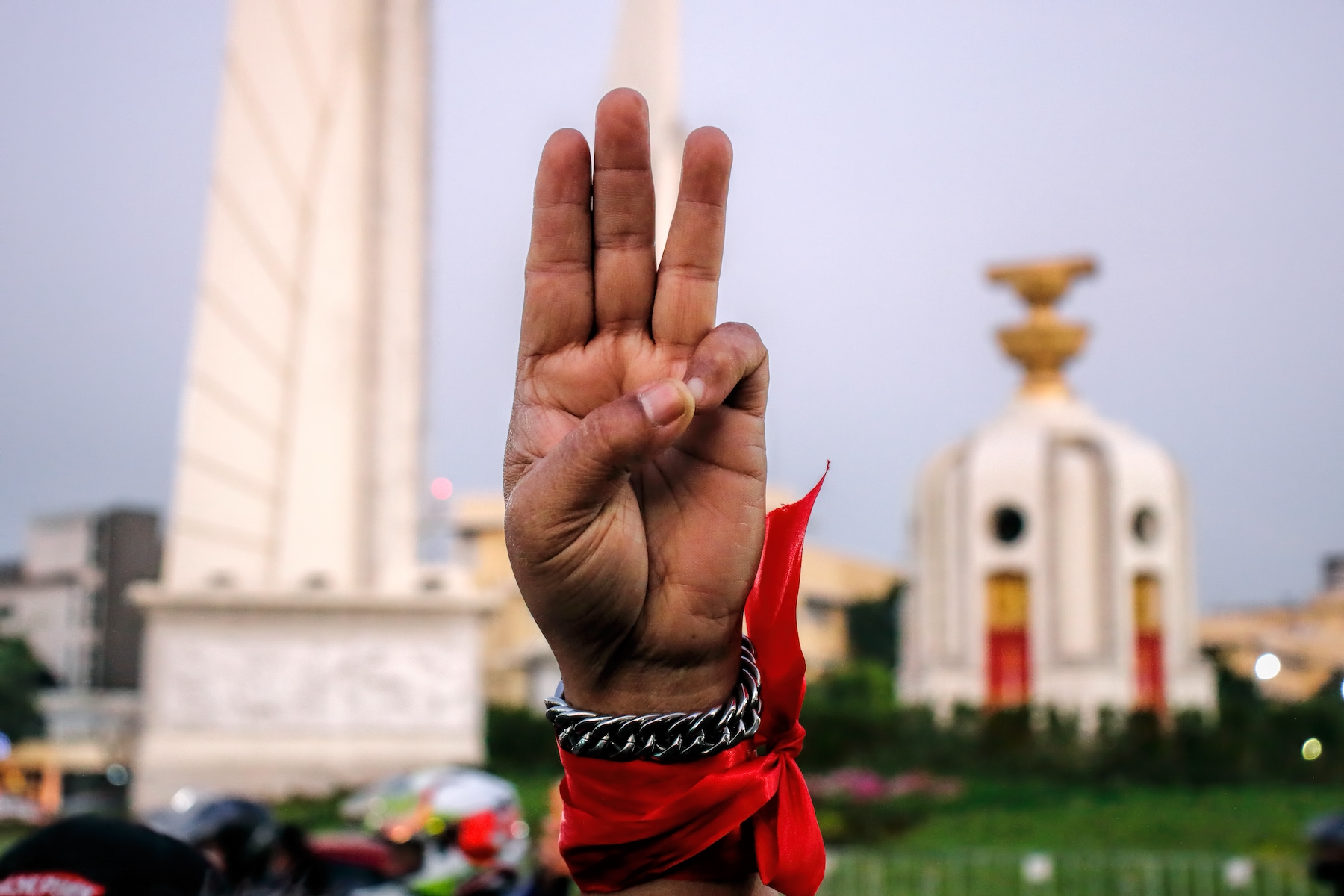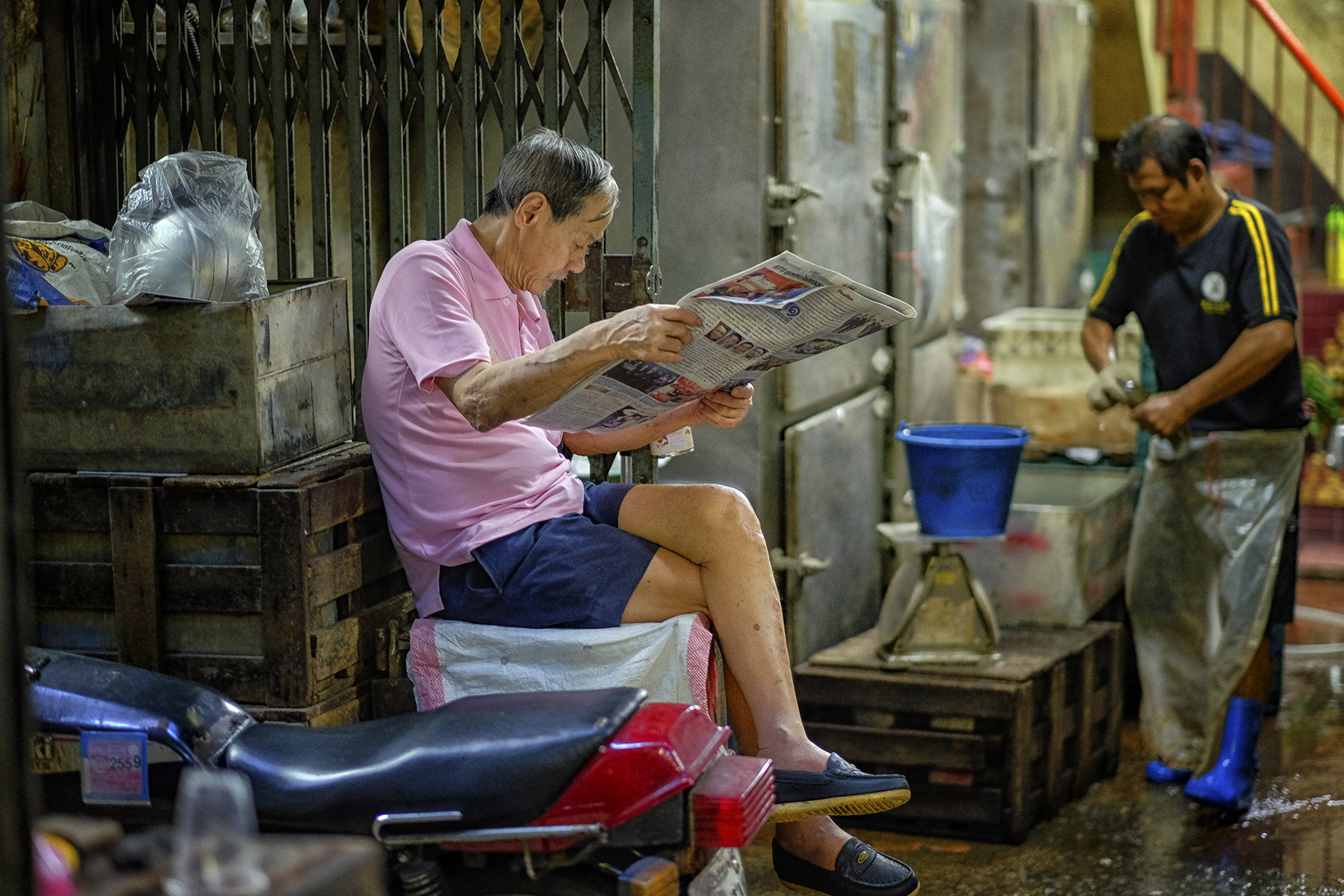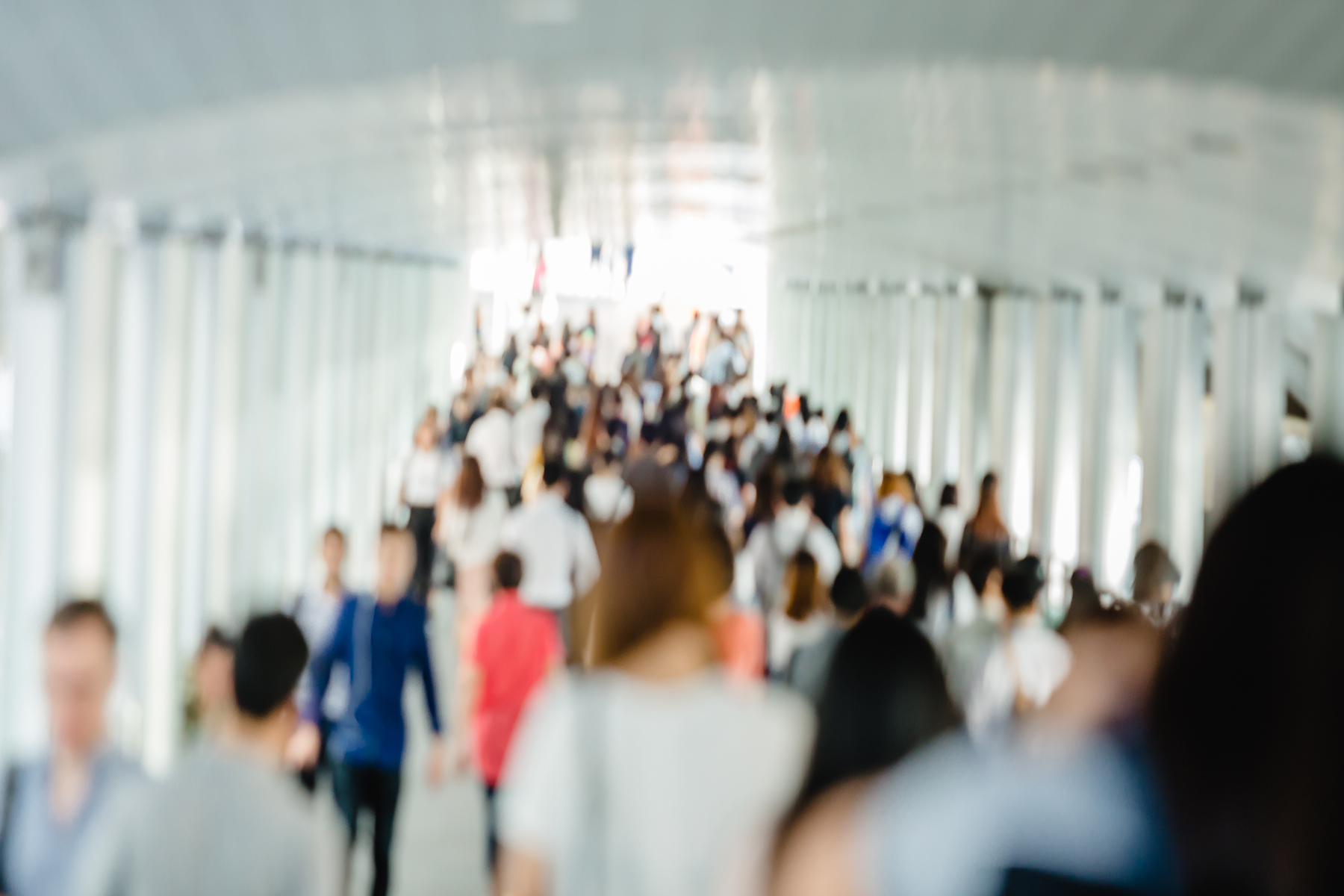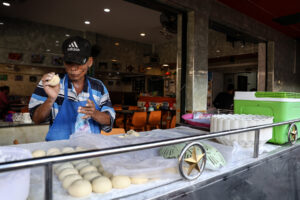Thailand is a country of contrasts. The kingdom boasts stunning natural landscapes, vibrant urban centers, delicious cuisine, warm and friendly people, and exciting places to explore. All of these (and more!) serve as compelling reasons for anyone looking to build a life in a tropical paradise where universal healthcare, free education, and a welcoming community are the standard.
However, amid these positives, Thailand also grapples with internal political tension, environmental pollution, and the occasional gun violence and corruption. Add to that a challenging immigration process and modest salaries, and the image might feel a little less rose-colored than before.
If you’re looking to relocate to Thailand – or you’re just interested in learning more about the country – we provide an introductory look at various aspects of life, including the following:
- A quick introduction to Thailand
- Thailands’s history and background
- What’s the geography like in Thailand?
- Two of the main cities in Thailand
- The Thai economy and living standards
- What is Thailand’s quality of life?
- Thai people and society
- Lifestyle and culture in Thailand
- What is typical Thai cuisine like?
- Government and politics in Thailand
- Human rights and freedom in Thailand
- Is crime a problem in Thailand?
- Healthcare, welfare, and social security
- The education system in Thailand
- Work and business culture in Thailand
- What are the important public holidays?
- Stereotypical myths about Thailand
- Useful resources
A quick introduction to Thailand
To the untrained eye, Thailand’s population might appear quite homogenous. However, there are some subtle demographic splits across the country.
For example, there are some 70 ethnic communities, including Central Thai, Thai Lao, Khon Muang, and Pak Tai. Smaller groups include Khmer Leu, Malay, Nyaw, Phu Thai, Kuy/Kuay, and Karen. According to the International Work Group for Indigenous Affairs (IWGIA), an estimated five million Indigenous people live in Thailand, accounting for 7.2% of the total population (2023).
There are also three to four million foreign citizens (farangs, also meaning guava) who call the country their home.
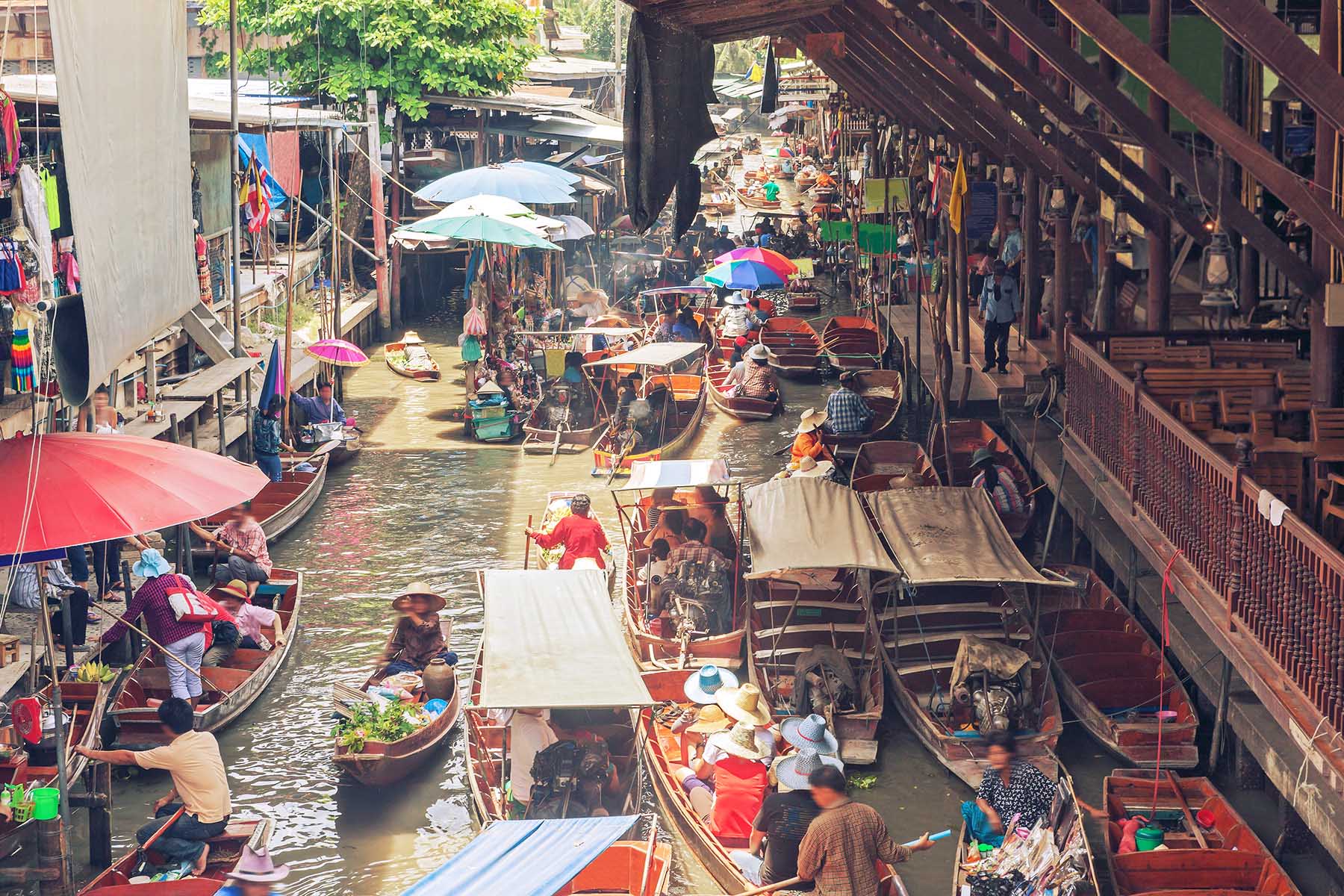
Thailand is among the fastest-aging countries in the world. Roughly 18% of the population is elderly, according to the latest national statistics report (2023). The country has been classified as an aged society since 2005.
Interesting facts and figures
- Official name: Kingdom of Thailand
- Official head of state: King Maha Vajiralongkorn (สมเด็จพระเจ้าอยู่หัวมหาวชิราลงกรณ), since 2016
- Prime Minister: Paetongtarn Shinawatra (แพทองธาร ชินวัตร), since 2024
- Population (as of January 2023): 71.8 million
- Provinces: 76
- Climate: Tropical
- Official languages: Thai (ภาษาไทย)
- Religions (as of December 2021): Buddhism (92.5%), Islam (5.4%), and Christianity (1.2%)
- Currency: Thai Baht (symbol: ฿)
- GDP (in 2022): ฿17.367 trillion (US$495.4 billion)
Thailands’s history and background
Thailand has a long history that stretches back to the 1200s when Thai city-states gradually gained independence from a weakened Khmer Empire.
Borders have shifted over the centuries, usually due to war with neighboring Myanmar and Laos. However, because of its skillful diplomacy and political wrangling, Thailand has the unique distinction of being the only country in Southeast Asia to have never been colonized by European Powers.
What are key historical dates in Thailand?
- 1782 – Bangkok is established to house the Royal Seat
- 24 June 1932 – the Siamese Revolution of 1932 does away with the absolute monarchy. Siam (Thailand) becomes a democratic constitutional monarchy, with a constitution and National Assembly.
- 1938–39 – the government moves toward a dictatorship under the leadership of Prime Minister Plaek Phibunsongkhram (known as Phibun)
- 1954–75 – the Vietnam War hastens the modernization and Westernization of Thailand
- 14 October 1973 – activists demand an end to the dictatorship during the Thai Popular Uprising of 1973. Hundreds, including university students who led the protest, are gunned down by security forces.
- 1997–9 – the Tom Yam Kung crisis causes the collapse of the Thai currency, which snowballs into the 1997 Asian Financial Crisis
- 2004 – the south of Thailand – including the popular resort island of Phuket – is hit by a major tsunami
- 2016 – the much-beloved King Bhumibol dies, ending the world’s third-longest monarchy. His successor, King Maha Vajiralongkorn, was crowned in 2019.
- 2020–1 – despite the COVID-19 pandemic, mass demonstrations are held across the country to protest the government and its human rights violations. Some also call for reforms of the monarchy. A year later, the Constitutional Court would declare the protests for reform unconstitutional, effectively committing a judicial coup.
You can find a more in-depth look at crucial moments in Thailand’s history online, including at the BBC.
What’s the geography like in Thailand?
Thailand is located on the Indochinese Peninsula, bordering Myanmar to the northwest, Laos and Cambodia to the east, and Malaysia to the South. Its sprawling land mass means it has a varied landscape of forested mountains, dry plateaus, fertile river plains, and world-renowned islands with sandy beaches and emerald-green waters.
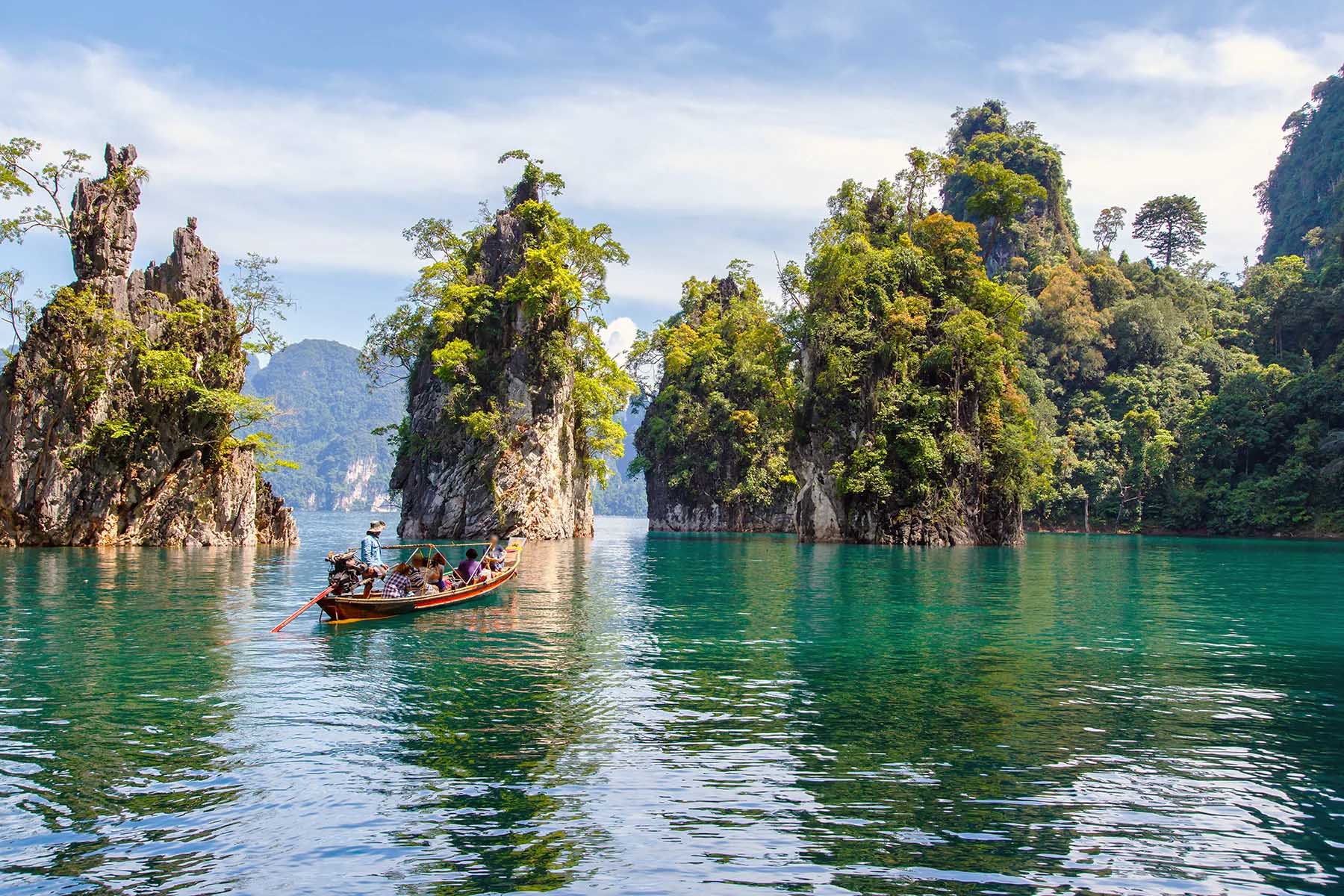
Some of its most attractive natural features include:
- With a sprawling 513,120 square kilometers, Thailand is the second-largest country in Southeast Asia (after Indonesia)
- Thailand’s tallest point is Doi Inthanon, a 2,565-m mountain in the Thanon Thong Chai Range, located in the province of Chiang Mai
- Roughly 38.8% of the country is covered in forest areas. Thailand also has three natural UNESCO World-Heritage Sites, including:
- Thungyai–Huai Kha Khaeng Wildlife Sanctuaries
- Dong Phayayen–Khao Yai Forest Complex
- Kaeng Krachan Forest Complex
- The Chao Phraya River is the most important waterway in Thailand. It originates in the north and flows through Bangkok southward to the Gulf of Thailand.
Climate and environmental sustainability
Because of its geographic positioning – just north of the equator and surrounded by land and water –Thailand experiences a range of climatic conditions. Most of the country has a tropical savanna climate, whereas the south has both a tropical monsoon and a tropical rainforest climate.
Thailand does not get the full four seasons that some expats are familiar with. Instead, there are three seasons with noticeable weather shifts across the year. These are heavily influenced by the southwest and northeast monsoons:
- The rainy season typically lasts from June until October, with August and September being the wettest months. However, monsoons and storms can occur as early as May.
- During the winter/cool season months (October until February), most of Thailand experiences dry weather with mild temperatures – with the exception of the southern region. This part of the country will see a lot of rainfall, particularly from October to November.
- Thailand’s hottest time of the year (i.e., summer/the hot season), runs from March to June. These months are characterized by intense heat and humidity, with temperatures regularly topping 40° Celsius.
Due to its geography and heavy rainfall, Thailand ranks among the ten most flood-affected countries in the world. Floods (น้ำท่วม) are by far the country’s most significant natural hazard in terms of economic and human impacts.
Another major concern is air pollution, especially in the urban sprawl of Bangkok, Nonthaburi, and Samut Sakhon. In 2022, the World Health Organization (WHO) rated Thailand’s air pollution at four times higher than its guideline value.

Writer and local expert
Gayatri Bhaumik
Insider tip
Contrary to what you might expect, pollution tends to be worse during the cooler winter season. You might therefore want to follow the locals’ lead and wear a face mask if you’re out and about in December.

Progress toward environmentally friendly policies seems to be sluggish. Although Thailand has nominally pledged to achieve carbon neutrality by 2050 and net-zero greenhouse gas emissions by 2065, there has been little tangible action. The country has no mandatory targets for protecting the environment.

Local expert
Jane Evans
Insider tip
Be sure to check the air-quality index for pollution in your area. Anything over PM 2.5 particles in the atmosphere can cause respiratory problems.
The highest levels are often in and around Bangkok and Northern Thailand. When levels are hazardous in the capital city, people are advised to work from home (wherever possible) and some schools are closed.
Two of the main cities in Thailand
Roughly 52% of the Thai population lives in urban areas and cities (2021), the most populous of which are Bangkok and Chiang Mai.
Bangkok
Known colloquially as Krungtep, Bangkok is a sprawling metropolis with some 11.7 million residents and 1-2 million expats. As such, you’ll find plenty of English speakers if your Thai language skills are not yet up to par.
For some, this bustling capital city can pose a little culture shock at first. After all, Thailand’s capital is a city that never sleeps. However, you will soon come to appreciate Bangkok for its rich culture and history, vibrant nightlife, and compelling blend of art, luxury fashion, religion, and food. There is lots to see and do, so there is never a dull moment.
If you’re looking to settle down in Bangkok, the city has something for every budget. From the heart of the city (like the Asoke area) to a suburb (like Lat Krabang), you can find different rental costs, food, communities, and job opportunities to suit your needs and tastes.
As Thailand’s financial heart, Bangkok is the backbone of the Thai economy. It’s home to the country’s main port and the Bangkok Stock Exchange, and has a thriving startup community. While tourism is a huge industry, you can also find work in numerous other sectors located on the outskirts of the city, including food processing, textiles, cement, petroleum, and building materials.
Chiang Mai
Located just a one-hour flight from the capital is Chiang Mai, the largest city in Northern Thailand. Known for its slower pace of life, this city has roughly 1.2 million residents, including an increasing number of expats who come to enjoy its many charms.

While its historical temples, picturesque mountains, and scenic views are a definite draw for some, Chiang Mai is most famous as a center of Thai handicrafts. Small villages nearby specialize in artisanship, such as silverwork, wood carving, pottery, paper umbrellas, and Thai lacquerware.
Don’t let that fool you into thinking this is a sleepy town, though. Chiang Mai offers an increasingly cosmopolitan lifestyle without Bangkok’s price tags and is growing in popularity among digital nomads.
While there is a big market for tourism, plenty of other industries make this city a draw for young professionals too. These sectors include agriculture, biotechnology, food-for-the-future, healthcare, automotive, and biofuels.
The Thai economy and living standards
Thailand boasts the second-largest economy in Southeast Asia (outperformed by only Indonesia). With a GDP of US$495.4 billion (or US$6,909 per capita), it has the 31st-largest economy in the world.
Tourism is – obviously – Thailand’s main economic driver, generating 56.7% of the gross domestic product (2022). Other significant contributors are the manufacturing, mining, and construction industries (34.8%) and agriculture (8.5%).
Despite its economic success, the Thai people are not necessarily seeing that reflected in their day-to-day lives. According to the Bank of Thailand, the average monthly income in 2023 ranged between ฿14,224 and ฿33,061 (or US$399–927.40). Meanwhile, the average living expenses of a single person sat at around ฿20,012 (a little over US$561) per month before rent. Depending on your housing costs, this leaves little to no room for saving.
While expats usually earn a higher salary, many foreign residents complain about the practice of double-pricing. This means businesses charge different prices for locals and foreigners for the same products or services, often by a factor of 10. The pricing system is applied to various sectors, including public transportation, national parks, restaurants, and shops.
Still, many internationals find that the cost of living in Thailand is generally very low.
Like many other countries, Thailand’s economy faces certain challenges, including declining exports, slowing growth, lower investor confidence after political turmoil, and weak public spending. Income disparity has also long been a problem in Thailand. A rising number of poor people are getting left behind.
Over the past few years, the government has approved several measures to boost the economy, which has garnered mixed results.
What is Thailand’s quality of life?
Thailand is an upper-middle-class society, with most residents enjoying a reasonably good quality of life. For example:
- The average life expectancy is 77.7, almost five years above the global average of 73.2 (2023)
- An incredible 86% of expat residents are happy with their life in Thailand, compared to the global average of 72%
- Thailand ranks 43rd out of 166 countries on the 2023 Sustainable Development Report, scoring particularly well on education and the eradication of poverty
The country has a strong rental market and socially, expats generally find easy acceptance. This is because Thais tend to be very easygoing and accepting – if reserved at first.
However, Thailand underperforms in areas like:
- Human rights
- Environmental safety
- Local life satisfaction
- Mental health
- Work-life balance
While family life is important to Thai society, long hours, demanding schedules, and strong hierarchies dominate the work culture. As a result, Bangkok was ranked the 5th most-overworked city in the world in 2022.
The country also scored rather low on HSBC’s 2021 Expat Explorer survey, ranking 40th out of 46 countries. It achieved low results in the future outlook rank, which rates internationals’ optimism for the coming 12 months.
Thai people and society
Thai people tend to be more modest and conservative than their counterparts in Europe and North America. Due to Thailand’s strong Asian identity, family is at the heart of social life. Age and class status play a significant role in social interactions, and showing deference and respect to those around you is essential.

As a society, the Thai people are generally warm and welcoming, respecting tradition while being open to modern values. This is held together by a deep respect for the dominant religion (Buddhism) and the monarchy.
The country has a charmingly relaxed approach to life, captured in the Thai expression of “mai pen rai” (everything is ok, no worries). This expresses a willingness to take life as it comes and find enjoyment where possible.

Local expert
Jane Evans
Insider tip
While Thai people are generally easygoing, confrontation of any sort is best avoided.
Losing face is a cultural faux pas in Thailand, and it is not uncommon for situations to escalate (e.g., road rage and bar fights). Even flipping the bird can cause a situation to turn nasty very quickly.
In such situations, it is best to take the highroad and walk away rather than confront the other person.
Lifestyle and culture in Thailand
Much of Thailand’s traditional culture comes from the ethnic Thai people. However, it also enjoys influences from neighboring countries such as Myanmar, China, India, and Laos.
While the government promoted a sense of national culture and identity in the 1950s, local culture and traditions gained prominence in the 1980s and 1990s. As such, regional cuisine, dances, music, celebrations, and beliefs have become more central to Thai life.
Arts and literature
Traditionally, Thai literature and poetry draw on Buddhism and Hinduism. Thailand has a rich tradition of folklore and legends performed by troubadours or local opera troupes.
Due to large-scale Chinese immigration in the mid-19th century, a number of well-known Chinese works were translated into Thai. The novel, based on European models, became more popular in the 1930s thanks to writers like Dō̜kmai Sot (pen name of Buppha Nimmanhemin née Kunchon, M.L.) and Siburapha (pen name of Kulap Saipradit).
Much of contemporary literature is centered around popular themes such as love and family. Since the 1980s, authors have also explored societal complexities like social inequality, sexual exploitation, and political corruption.
On the fringe of literature stands the Thai comic or graphic novel. While their publication started in the early 20th century, they surged in the 1980s and 1990s after a string of successful comic series.
With the rise of the internet, webcomics have also gained popularity. Prominent works include the award-winning Super Dunker by Jakraphan Huaypetch and Pinto Love in a Lunchbox (ปิ่นโต) by Sinad Jaruatjanapat.
Performing arts and entertainment
Historically, dance and opera were very popular in Thailand. The most famous example of Thai performing arts is Khon (โขน), a classical court-masked dance drama that dates back hundreds of years.
It encompasses dance, music, drama, and pantomime, and features elaborate costumes, headdresses, and masks. While traditionally performed by men only, modern Kohn has opened the stage to female actors as well.

Traditional Thai music features percussion and string instruments, and has hints of Chinese, Cambodian, and Indian influences. Classical music ensembles include percussion-dominated piphat, stringed khrueang sai, and mahori, a mixed ensemble that often accompanies vocalists.
Luk thung (Thai country music), mor lam (Lao folk music), and American Jazz became popular in the mid-20th century. Thai Rock emerged a decade later, influenced by rock bands from the US and the UK. From the 1990s onwards, pop music became more mainstream. Famous Thai singers include:
- Lisa (stage name of Lalisa Manobal)
- Suraphol Sombatcharoen
- Pueng (stage name of Pumpuang Duangjan)
Thailand also has a thriving film industry. Popular genres and styles include action movies, comedies, documentaries, dramas, thrillers, horror films, and romances. The highest-grossing Thai film of all time is the 2013 supernatural rom-com horror movie Pee Mak, directed by Banjong Pisanthanakun.
Perhaps the most recognizable TV genre in Thailand is lakorn, a type of soap opera comparable to a Hispanic telenovela. Major subgenres and styles include historical romances, psychological thrillers, and action series. Lakorn often portrays Thai culture through elements of music, dance, and clothing.
Sports
When it comes to sports, only one truly matters in Thailand: muay Thai (i.e., Thai kickboxing), the martial art that’s gained worldwide popularity. Recreationally, sepak takraw (a kind of kick volleyball played with a rattan ball) is well-liked, as are football, volleyball, badminton, and water sports such as scuba diving, kiteboarding, and rafting.
Many locals and expats also take up tennis and golf because of their relative affordability and the many great courts and courses across the country.
Religion
Buddhism is the dominant religion in Thailand and is practiced by approximately 92.5% of the population (2021). Other faiths include Islam (5.4%) and Christianity (1.2%).
Some ethnic groups also practice Thai folk religion, a form of animist religious beliefs intermixed with Buddhism. This faith is represented in – among other things – spirit houses, miniature shrines that shelter guardian spirits.

Although there are many forms of Buddhism in Thailand – including Chinese and Hindu Buddism – its leading school is Theravāda. The two fundamental concepts of this religion are reincarnation and Nirvana. Once a person has learned the meaning of existence, their reincarnation cycle ends, and they can enter Nirvana and be free from all suffering.
There are over 41,200 Buddhist temples (วัด, wat) in Thailand. These are often characterized by tall golden chedi (or stupas) and multiple ornamented roof tiers. The most famous temples include:
- Wat Rong Khun (the White Temple) in Chiang Mai
- Wat Phra Si Sanphet in Ayutthaya
- Wat Phra Chetuphon Wimon Mangkhalaram Rajwaramahawihan (better known as Wat Pho) in Bangkok
Thailand’s constitution guarantees religious freedom for all citizens and officially recognizes Buddhism, Islam, Christianity, Hinduism, and Sikhism. While church and state are separated, the law requires the king to be Buddhist and declares him to be the ‘upholder of religions’.
What is typical Thai cuisine like?
Anyone familiar with Thailand’s foodscape knows the country’s greatest hits, like green curry, stir-fried Thai noodles, and spicy and sour shrimp soup (tom yum goong). But like its geography, Thai cuisine is a vast and varied landscape.
Street food has been elevated to art, one you simply cannot miss. Even if you skip the hours-long line for Jay Fai’s Michelin-starred crab omelet and stir-fried drunken seafood noodles (pad kee mao talay), you’ll find plenty of delicious options to satiate your hunger.
Thai cuisine is generally heavy on aromatics and packs a serious flavor punch – and often a nice dash of heat. Many ingredients focus on popular local produce and spices like coconut milk, shrimp paste, garlic, chili peppers, cilantro, lemongrass, and galangal. That said, each regional kitchen has its nuances.
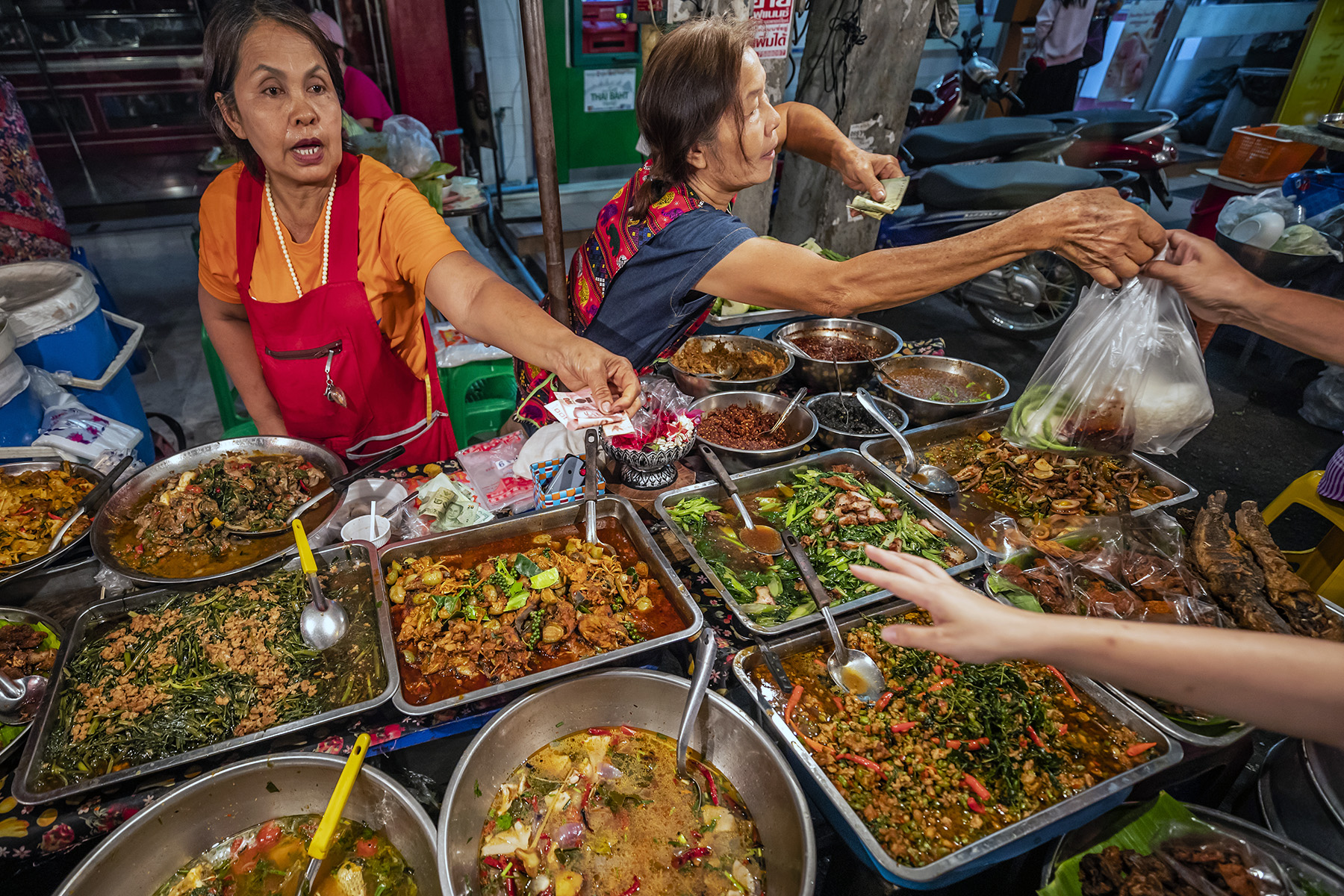
Bangkok is famous for its royal cuisine, which is produced in Thailand’s palace kitchens. Made with fresh, high-quality ingredients, dishes are held to lofty standards – including removing bones and pits and requiring perfectly balanced flavors.
The northeastern region is known for its fiery – yet simple – Isan cuisine, which features a wide range of flavors and textures. Examples include spicy green papaya salad (som dtam), spicy protein salad (laab) served with sticky rice, and grilled pork neck (kor moo yang).
Government and politics in Thailand
Thailand is a constitutional monarchy with a parliamentary system led by the head of government, Prime Minister Paetongtarn Shinawatra. The reigning monarch, King Maha Vajiralongkorn (or Rama X), is the head of state. He is aided in his duties by the Privy Council of Thailand.
Most Thai citizens over 18 have the right to vote, except monks, felons, and those diagnosed with mental disorders. Their democratic vote determines the party in power, unless the military decides otherwise.
In just over a century, Thailand has seen 13 successful and nine unsuccessful military coups. There have been a total of 20 constitutions since the overthrow of the absolute monarchy in 1932. The latest Constitution was passed in 2017, suppressing the opposition and expanding much of the military’s power. As such, a council of military leaders currently runs the country.
Thailand has a number of allies in the region, including China, Japan, India, and South Korea. The country is a key player within the Association of Southeast Asian Nations (ASEAN) and enjoys strong diplomatic ties with many countries around the world, including the US.
Human rights and freedom in Thailand
Thailand ranks pretty poorly on the 2022 Human Freedom Index. It came 104th out of 165 countries, getting a just-above-passing grade on personal freedoms and human rights. In South Asia, Thailand came in eighth place out of 16.
That said, the country scores particularly well on freedoms of religion, economic independence, and gender and sexual equality. In fact, it is the first country in Southeast Asia to legalize same-sex marriage.
However, these positives pale in comparison with Thailand’s human rights issues. A 2023 report by Human Rights Watch highlights significant violations, such as:
- Censorship and restrictions on freedom of expression and peaceful assembly
- Attacks on human rights defenders and political imprisonments
- Instances of violence, torture, and enforced disappearances of suspected criminals, dissidents, and ethnic minorities
Although the Thai Constitution allows freedom of expression and the press, the reality is somewhat different. There are many government-mandated constraints, including politically motivated preferential treatment, internet monitoring, and blocking of certain websites. The Reporters Without Borders World Press Freedoms Index ranks Thailand 106th out of 180.

According to international watchdogs, the government frequently uses the royal defamation law lèse-majesté to target critics and prosecute dissenting voices.
The law – known as 112 after the relevant section of the criminal code – is one of the harshest in the world and protects the royal family from criticism. Any perceived insult or negative comment can carry a jail sentence of up to 15 years. Even hitting the like or share button can be enough to bring on charges.
What rights do women have in Thailand?
Section 4 of the Constitution considers men and women equal. Thailand has also signed the 1985 UN Convention on Discrimination Against Women and numerous other gender-focused international treaties. Nationally, it has enacted the 2015 Gender Equality Act, which prohibits unfair treatment based on gender.
Because of Thailand’s conservative culture, reality hits a little differently. Women are often expected to fulfill traditional roles and face discrimination across many different sectors. This is especially true in rural areas. In 2022, women’s labor force participation rate was 58.7%, compared to 74.8% among men. Between 2010 and 2019, women spent 3.2 times more time on unpaid domestic and care work than men.
Conversely, Thailand’s business world has many women in charge. Around 32% of senior leadership positions in mid-market companies are held by women (2020), which is more than the global and Asia-Pacific averages.
Is crime a problem in Thailand?
Crime rates in Thailand are consistent with the global average, according to the 2023 Global Peace Index. The country ranks 92nd out of 163, with high possibility levels of terrorist activities, internal conflict, and violent crimes. It also has a serious problem with gun violence.
Though it pales in comparison to the levels in the US, Thailand has one of the highest rates of gun ownership and gun violence in Asia. And while mass shootings are relatively uncommon, they do occur.
The deadliest in Thai history occurred recently; the 2022 Nong Bua Lamphu massacre resulted in the deaths of at least 38 people, most of whom were children. In its wake, some critics called for gun reform and cracking down on the black market. However, this has lost traction since then.
The 2023 Global Organized Crime Index paints an even bleaker picture. It ranks Thailand 44th out of 193, with the top position being reserved for the most criminal country worldwide. The OC Index accuses Thailand of having to deal with issues like human trafficking, (s)extortion, drugs and arms trafficking, counterfeit goods and contraband, illegal logging, illegal wildlife trade, fraud, money laundering, briberies, and state corruption.
The 2022 Corruption Perceptions Index also suggests that the country has a corruption problem. Thailand ranks 101st out of 180 countries, with a score of 36/100.
That said, if you’re not in the criminal underworld, these crimes are not something to worry about on a daily basis. The likelihood of, for example, home break-ins, street robbery, car theft, and physical attacks is generally low. Pickpocketing and purse snatching do occur more frequently across different urban areas.
Healthcare, welfare, and social security
Thailand has an excellent healthcare system that offers free (or very affordable) universal medical care to citizens and subsidies via social security for tax-paying expats. The government funds 70.4% of public healthcare costs, insurance covers roughly 20%, and patients pay the remaining 10%.
Thailand’s social security and welfare system is similarly robust. It provides sickness, disability, parental, and old-age benefits to all registered residents and even offers a funeral grant to help cover costs if the insured person dies.
The education system in Thailand
Basic education is mandatory from ages 6 to 15, and parents can choose between public, private, and international schools. Homeschooling is also a legal option.
Thailand spends 2.6% of its national GDP (2023) to provide free public education. Unfortunately, the state school system lags behind other Asian and European countries. For example, Thai teenagers average 393 points in reading literacy (compared to an OECD average of 487) and 419 points in maths (while the OECD average is 489).
People in rural areas are the most disadvantaged; a 2019 World Bank report found that 47% of 15-year-olds in remote villages were functionally illiterate.

After graduation, students can take on vocational training or attend local universities. Two of Thailand’s universities rank in Asia’s top 100:
- Chulalongkorn University in 44th place
- Mahidol University in 51st place
Work and business culture in Thailand
In the third quarter of 2023, the National Economic and Social Development Council (NESDC) reported an incredible 0.99% unemployment rate. The Thai workforce comprises roughly 40.1 million people, with around one in four being self-employed.
Common jobs for expats who don’t speak Thai fluently include English teachers, diving instructors, and service workers.
Thai business culture is built on traditional Asian values and places importance on family values, respect for seniority, and commitment to achieving professional success. Official work hours are usually from 09:00 to 18:00 – with one hour for lunch – on Mondays through Fridays. However, Thai work culture is renowned for long working hours, demanding schedules, and a minimum amount of vacation days.
In offices, you can expect a slightly conservative, formal dress code to match the traditional hierarchical structures. Loyalty, long-term commitment, and a demonstration of cultural sensitivities are highly regarded.
What are the important public holidays?
Thailand usually has 19 public holidays planned throughout the year, though the cabinet may declare more as the year progresses. The most important holidays include:
| Holiday | Date | Description |
| Thai New Year (Songkran) | 13–15 April | To celebrate the Thai New Year, the country holds a massive water festival. Many Thais travel to spend the days with their families. |
| Queen Suthida’s Birthday | 3 June | |
| King Vajiralongkorn’s Birthday | 28 July | |
| Mother’s Day | 12 August | This also celebrates Queen Mother Sikirit’s birthday |
| King Bhumibol Adulyadej Memorial Day | 13 October | Commemorates the passing of King Bhumibol in 2016 |
| King Chulalongkorn Day | 23 October | Commemorates the passing of King Chulalongkorn in 1910 |
| Father’s Day | 5 December | This also celebrates King Bhumibol’s birthday |
| Constitution Day | 10 December | Commemorates the establishment of the first constitution in 1932 |

The Thai calendar also has several cultural festivals; some of these are local events, whereas others are national occasions. The biggest festivals include:
| Festival | Date | Description |
| Lunar New Year | January or February | Start of the lunar year |
| Chiang Mai Flower Festival | First weekend of February | Held annually in Chiang Mai |
| Illuminated Boat Procession | October or November | An illuminated boat procession in Nakhon Phanom Province |
| Loy Krathong | November | Thailand’s Festival of Light |
| Yee Peng Lantern Festival | November | The Thai Lantern Festival celebrated in Chiang Mai |
Stereotypical myths about Thailand
Myth: The nightlife is sleazy
That’s a hard no on this misconception. While many tourists think Thailand’s nightlife centers around Bangkok’s Khao San Road and Phuket’s Patong, both of which are subjectively seedy, local residents know better.
Be sure to ask around where you can find good nightlife experiences outside these tourist zones. You will discover a world of world-class cocktail bars and clubs that have more in common with Ibiza (Spain) than Amsterdam’s (the Netherlands) Red Light district.
Myth: All Thai food is spicy
Don’t worry if you can’t handle spice! While Thai cuisine has plenty of pèt dishes, there are also many that won’t leave you sweating. And if you really want to avoid anything spicy, you can always ask the cook to tone it down by saying mâi pèt (ไม่เผ็ด – not spicy).
Myth: everything in Thailand is cheap
While it is true that – comparatively – Thailand is cheaper than the home countries of most expats, you can still end up shelling out a lot of money. Urban Bangkok is full of Michelin-starred restaurants, designer malls, and luxury hotels, all of which can quickly max out your credit cards. And you can quickly bust your budget if you want to get pampered at a popular island resort.
Useful resources
- Tourism Thailand – government tourism website
